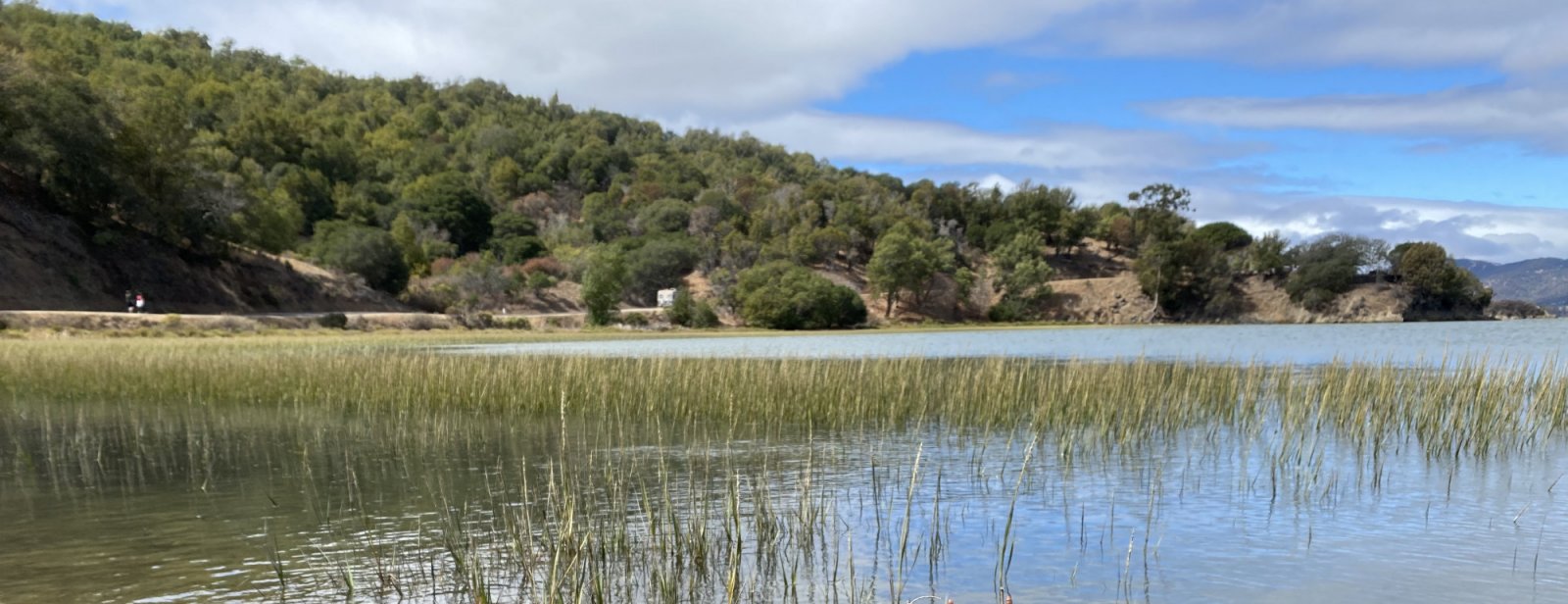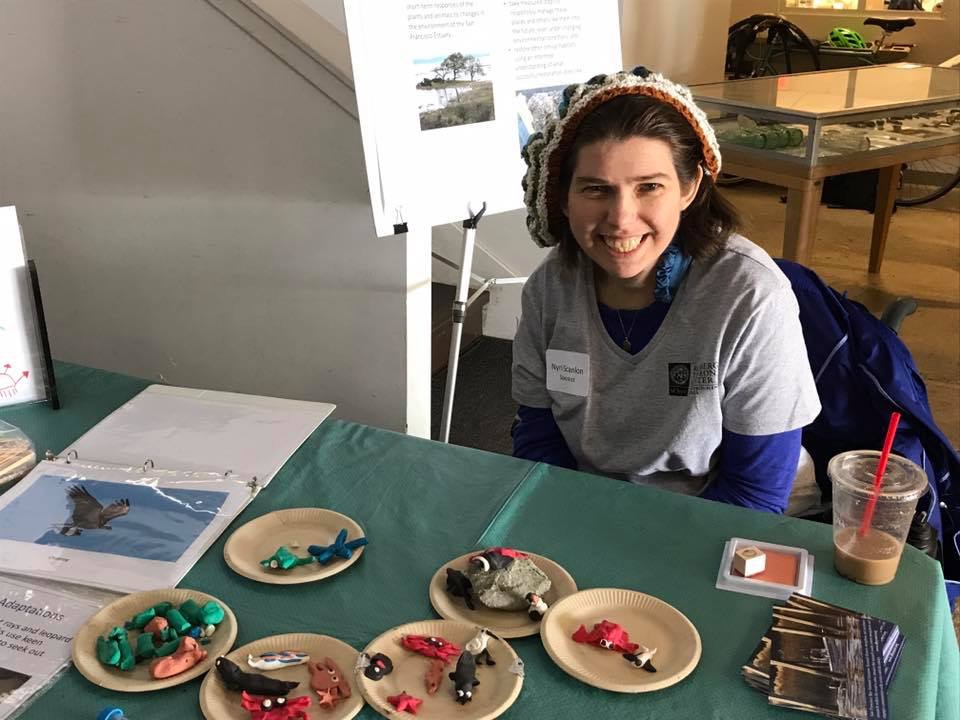
The Women of NERR
Female scientists from the SF Bay Area National Estuarine Research Reserve lead the way at China Camp
Quick, picture a scientist. Now imagine that scientist doing research on the tidal marshlands surrounding China Camp State Park.
Now, who do you imagine? Is it someone reaching through pickleweed and salt grass to collect water samples? Is it someone juggling gear while knee-deep in mud? Or is it someone not in the marsh at all, but sitting in an office or lab, looking up research on a computer?
One more question: Did you imagine it was a man or a woman?
When it comes to the scientists studying at the San Francisco Bay National Estuarine Research Reserve (SF Bay NERR), you’d better imagine a woman. At SF Bay NERR, which includes the wetlands surrounding China Camp State Park, a team of female scientists lead the charge in studying the health of the San Francisco Bay estuary.
The women’s research includes tracking the effects of sea-level rise, monitoring how native species, such as oysters, improve the health of our estuaries, and compiling extensive research databases for public access.
Here is a look at three of SF Bay NERR’s dedicated female researchers:
Julie Gonzalez
Studying sea-level rise with specialized "marsh boxes"
Julie, NERR’s current Margaret A. Davidson Fellow, focuses on how flooding and sea-level rise impact salt marsh communities.
At China Camp, Julia has set up plexiglass “marsh boxes,” visible only if you know where to look. These boxes, which nestle into the marsh to contain plants and invertebrates within their plastic walls, retain water when the tide goes out. This means the plants and animals within the confines of the marsh box stay inundated with bay water, simulating climate-change impacts like severe flooding or sea-level rise.
Julie’s research will increase our understanding of how rising tides can affect plant communities, soil chemistry, and animals—including birds and fish—that depend on tidal marshlands for habitat and food.
Allie Margulies
Showing how native oysters bolster bay health
In the tidal flats surrounding China Camp’s historic shrimping village, Allie, a graduate student at San Francisco State University, focuses on a tiny Bay Area creature with a not-so-tiny-impact. It’s the Olympia oyster (Ostrea lurida), a marine bivalve that plays an important role in maintaining the health of tidal wetland ecosystems in the West.
Though current populations of this native oyster species are greatly reduced from their historic numbers in the Bay Area, Olympia oysters still play an important role in naturally filtering our bay’s water. Native oyster beds can also help protect against erosion from rising tides, a serious concern in the face of climate change.
On her semi-regular trips to the park, Allie visits oyster monitoring sites at Rat Rock Island and Bullhead Flats. Using specialized equipment, Allie tracks the health and productivity of China Camp’s native oyster populations. This data can help us understand the oyster’s responses to climate-driven impacts, such as changes in rainfall and water temperatures. Allie’s important findings collected at China Camp and other sites can help direct future restoration projects throughout the San Francisco Bay.
Making wetlands research available to all
Out of the field but not out of the loop is Nyri Scanlon, a research assistant at SF Bay NERR. Calling on her long history of scientific curation, Nyri is now compiling a Zotero reference library that hosts hundreds of research articles published by scientists focusing on estuaries within the region.
Nyri’s comprehensive reference library is available to anyone wanting to learn more about estuary science and why we should take steps to protect our sensitive and essential wetlands, especially in the face of climate change. Intrigued? You can peruse this extensive database and compiled publications by emailing Nyri directly.
Stay tuned to hear more about Julie and Allie’s research at China Camp, and visit sfbaynerr.org to keep up to date with Nyri’s growing reference library.
Contributor Bella Mayorga is the Education Coordinator at SF Bay NERR, and the Estuary & Ocean Science Center at San Francisco State University. Visit SF Bay NERR’s website for more on Bella and the rest of the staff.




